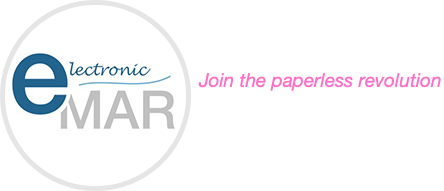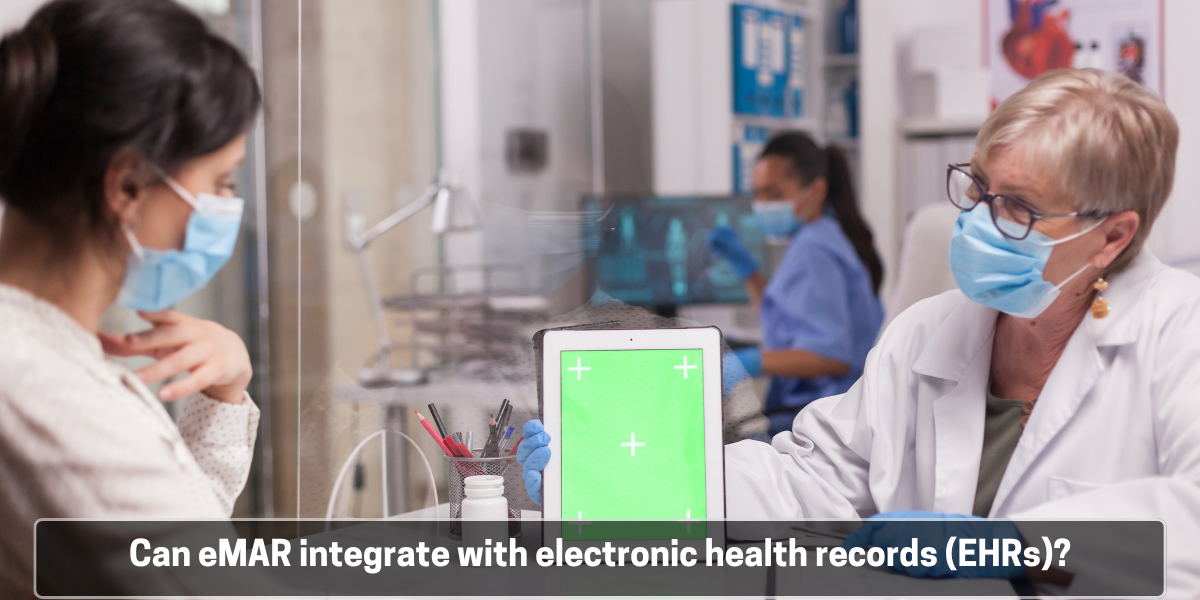Running a care home means staying on top of many tasks—keeping residents safe, managing staff, dealing with families, and following rules set by health regulators. One area where many care homes look to improve is how they handle medicines. Paper records often lead to mistakes, missed doses, or extra work. That’s why more and more care homes are switching to electronic medication administration records (eMAR).
If you’re thinking about using eMAR, you may wonder if it can work with your current system for storing resident information—your Electronic Health Records (EHRs). The short answer is yes. In fact, linking the two can make your care home safer, more organised, and easier to manage.
Here, we explain what eMAR and EHRs do and how they can work together:
What Are eMAR and EHRs?
eMAR stands for electronic Medication Administration Record. It’s a digital tool that helps care staff know what medicines to give, when to give them, and how much to give. It also shows who gave the medicine and if any doses were missed. Everything is recorded on a screen, rather than on paper.
EHRs, or Electronic Health Records, hold all the health information about a resident. This includes their medical history, allergies, doctor’s notes, test results, care plans, and contact details. EHRs give a full picture of the resident’s health.
Both systems are useful on their own, but when they are joined together, they become even more powerful.
Why Link eMAR with EHRs?
1. Fewer Mistakes
When eMAR and EHRs are linked, staff always see the most up-to-date medication list. If a GP changes a resident’s prescription, that update shows in the eMAR system right away. Staff won’t give the wrong dose or a medicine that’s no longer needed.
2. Less Paperwork
Without integration, staff might need to type the same information into two different systems. That takes time and increases the chance of errors. Linking the systems means updates happen automatically, saving time and reducing stress.
3. Better Resident Care
When medication information and health records are in one place, staff have a clearer picture of each resident’s needs. For example, if a resident has an allergy, this will show up when staff go to give medicine. This helps staff make safer choices.
4. Easier Checks and Reports
The Care Quality Commission (CQC) and other bodies want to see clear records. An integrated system makes it easier to show who gave which medicines and when. It also helps with audits, reviews, and inspections.
Before linking eMAR and EHR systems, consider the following:
1. Staff Training
Your care team must know how to use the new system properly. Training should cover how to check for updates, give medicine, and record notes. Some staff may be used to paper and need extra support.
2. Data Protection
Health records are private. Make sure any system you use follows GDPR rules and keeps resident data safe. Only the right people should be able to see or change records.
3. Internet and Devices
An eMAR system needs a reliable internet connection and good devices, such as tablets or computers. Test your Wi-Fi in all areas of the home. You may need to upgrade your equipment.
4. Cost and Contracts
Check the full cost of the system, including setup, training, support, and ongoing fees. Look at the contract terms and ask what happens if you want to change providers later on.
5. Support and Backup
Make sure there’s help available if something goes wrong. Ask about customer support hours and what the company does if the system goes offline. Is there a backup plan for emergencies?
Linking eMAR with your Electronic Health Records can make a big difference. It helps staff do their jobs more easily, protects residents, and makes your care home look more professional during inspections.
Yes, the setup takes some planning, and there are costs involved. But the long-term benefits—safer care, less stress, and more time for residents—are well worth it.







